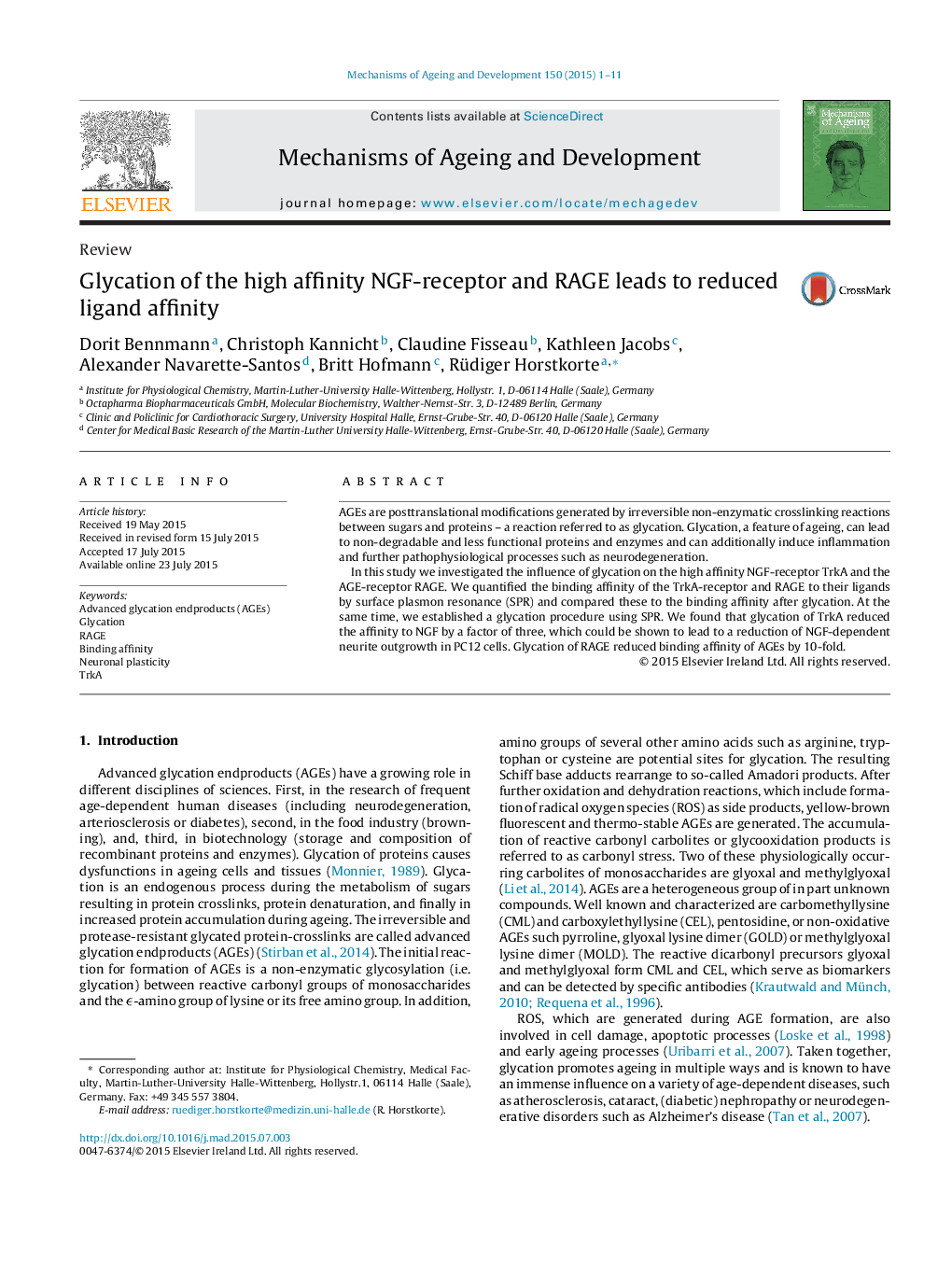| Article ID | Journal | Published Year | Pages | File Type |
|---|---|---|---|---|
| 1919173 | Mechanisms of Ageing and Development | 2015 | 11 Pages |
•We established a method to glycate proteins on a surface plasmon chip.•We quantified binding constants for glycated and non-glycated RAGE and TrkA.•Glycation of TrkA leads to a reduction of neurite outgrowth via ERK1/2 activation.
AGEs are posttranslational modifications generated by irreversible non-enzymatic crosslinking reactions between sugars and proteins – a reaction referred to as glycation. Glycation, a feature of ageing, can lead to non-degradable and less functional proteins and enzymes and can additionally induce inflammation and further pathophysiological processes such as neurodegeneration.In this study we investigated the influence of glycation on the high affinity NGF-receptor TrkA and the AGE-receptor RAGE. We quantified the binding affinity of the TrkA-receptor and RAGE to their ligands by surface plasmon resonance (SPR) and compared these to the binding affinity after glycation. At the same time, we established a glycation procedure using SPR. We found that glycation of TrkA reduced the affinity to NGF by a factor of three, which could be shown to lead to a reduction of NGF-dependent neurite outgrowth in PC12 cells. Glycation of RAGE reduced binding affinity of AGEs by 10-fold.
